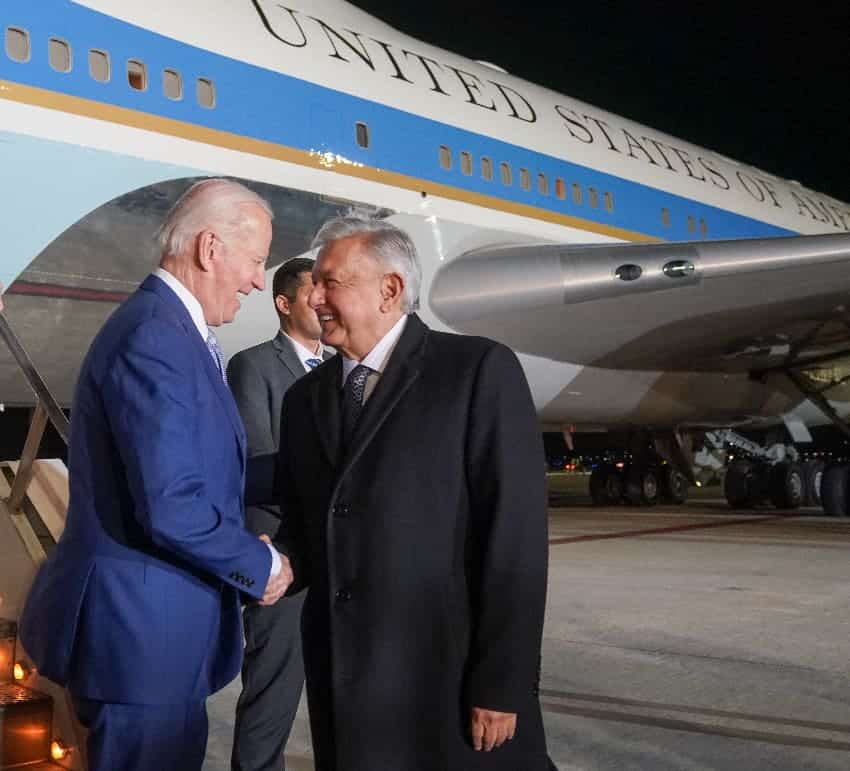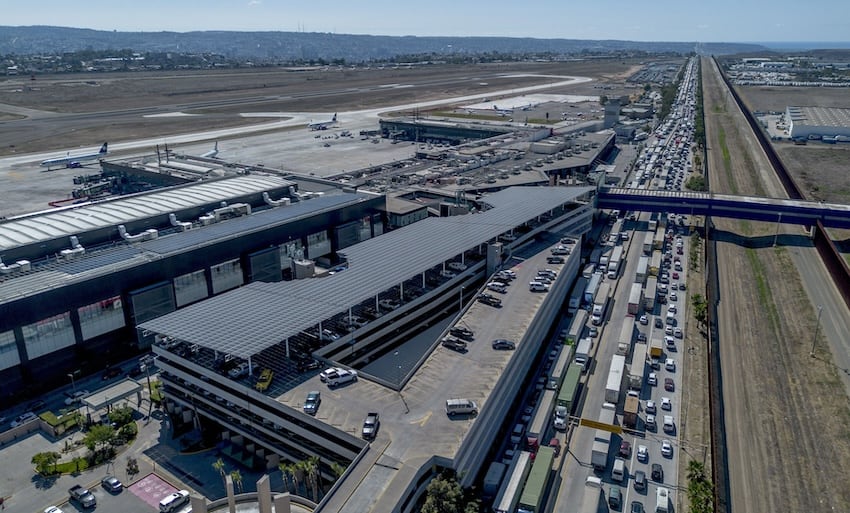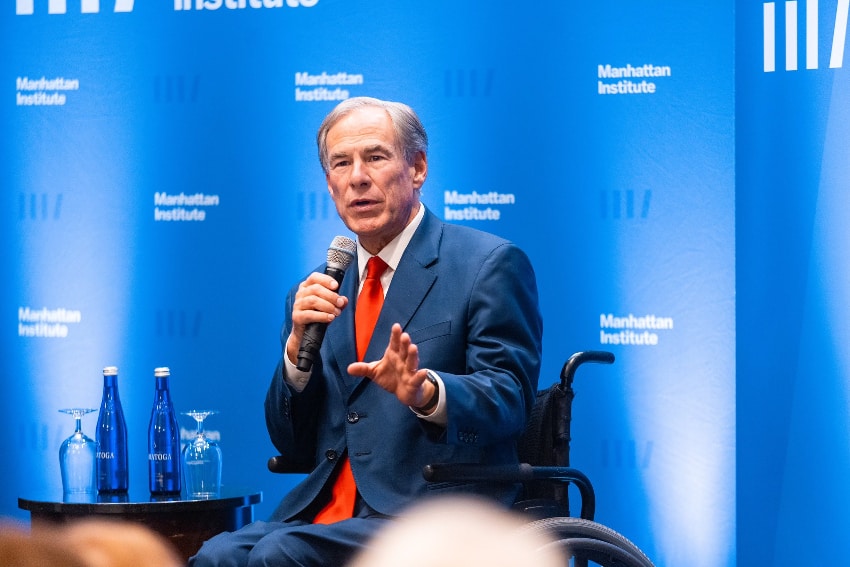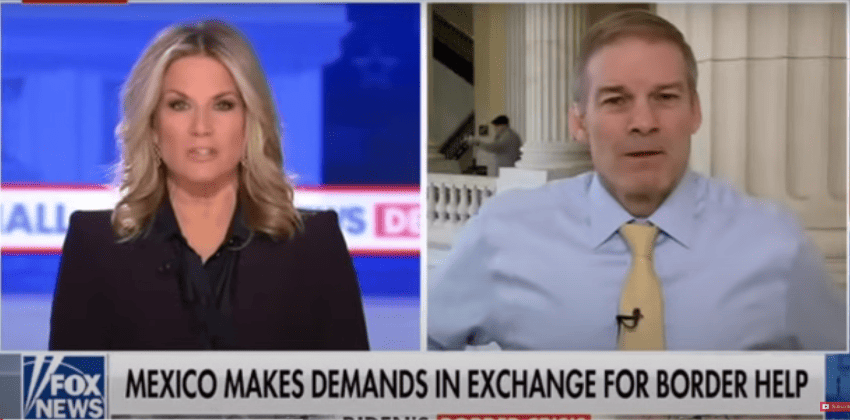Are Mexico and the United States heading toward some kind of broad-based quid pro quo that will help reduce the number of migrants arriving at the Mexico-U.S. border?
Both sides want something from the other — that is clear — but it remains to be seen whether they can reach a substantive deal. An answer just might come before the end of the month.

United States Customs and Border Protection (CBP) processed a record high of over 300,000 migrants at the U.S. southern border in December, after encountering an all-time high of almost 2.5 million in fiscal year 2023, which concluded in September.
With the United States presidential election less than 10 months away, it’s not surprising that the Biden administration is pushing for the Mexican government to do more to slow the flow of migrants to the 3,145-kilometer-long Mexico-U.S. border.
President Andrés Manuel López Obrador — whose non-extendable six year term will end Oct. 1 — appears prepared to ramp up Mexico’s efforts to stem migration, but not without getting something in exchange from the United States, a country he believes is partially responsible for the exodus of people from other Western Hemisphere nations.
What does the United States want from Mexico?

After speaking with three unnamed United States officials including one described as “a senior Biden administration official,” NBC News reported Monday that the U.S. government “needs Mexico to let it push more non-Mexican immigrants back across the U.S. southern border” in order to bring migrant numbers down.
Both the Trump and Biden administrations used the Title 42 public health order to return migrants to Mexico without an asylum screening. While that policy was in effect, Mexico accepted the return of over 1 million migrants per year during three consecutive years between 2020 and 2022.
The policy ended last May, and Mexico is now only officially willing to take back 30,000 migrants per month — just 10% of the number processed by CBP in December.
United States negotiators, NBC reported, “also want Mexico to step up enforcement on its southern border with Guatemala and deport more migrants who are apprehended within the country.”
With broad support from Republican Party lawmakers, the United States House of Representatives approved a bill last May that “would effectively end access to asylum at the border,” according to a Reuters support.
The bill — officially called the Secure the Border Act of 2023 — has not been voted on in the Democrat-led Senate, where it would almost certainly be rejected.
NBC reported Monday that “negotiations over border security measures between Republicans and Democrats continue into their second month with no clear breakthrough.”
What does Mexico want from the United States?
At his morning press conference last Friday, President López Obrador (AMLO) outlined four “measures” he would like the United States government to take.

-
Allocate US $20 billion in funding to countries in Latin America and the Caribbean over an unspecified period of time.
The United States Congress should “approve a plan of cooperation for development and well-being,” López Obrador said, adding that the aim of such an initiative would be to address the structural causes of migration — things such as poverty, violence and lack of opportunity.
He has previously urged Biden to champion “a new policy of economic and social integration on our continent,” like the Alliance for Progress development plan of the 1960s, an initiative of former U.S. president John F. Kennedy.
2. Regularize the migratory situation of “at least 10 million Hispanics” who have “worked honorably” in the United States for more than 10 years.
AMLO has praised the U.S. government for opening up new migration pathways for citizens of some Western Hemisphere countries, but believes the Biden administration should also issue visas to Mexicans who have lived and worked in the U.S. for extended periods.
In November, he emphasized the importance of regularizing the status of Mexican migrants in the U.S. — who he often describes as “heroes” in recognition of the large sums of money they send home — due to the “anti-immigrant attitudes” of some state governors, such as Greg Abbott of Texas and Ron DeSantis of Florida.
3. Suspend the embargo against Cuba and commence bilateral talks with the Cuban government.
López Obrador, who has long called for the lifting of the U.S. trade blockade and advocated bilateral dialogue, posed a number of questions regarding the U.S.-Cuba relationship (or lack thereof).
“What danger can Cuba or any other country represent to the United States? How can the people [of a country] be sacrificed for political and ideological interests? Can’t there be dialogue? Can’t there be understanding? Can’t there be a relationship of respect?”
4. Remove all sanctions on Venezuela.
Venezuela is currently one of the largest source countries of migrants to the United States.
López Obrador noted that the majority of the 32 migrants abducted in Tamaulipas on Dec. 30 are Venezuelan.

Removing U.S. sanctions on the once-prosperous but currently poverty-stricken South American nation would “go to the heart” of addressing the cause of migration in Venezuela, he said.
The latter two proposed “measures” are reminiscent of one of 13 points agreed to by the countries in attendance at a regional migration summit hosted by López Obrador in Palenque, Chiapas, last October.
The governments of 10 countries, including those of Mexico, Venezuela, Cuba and Colombia, urged the removal of “unilateral coercive measures imposed on countries of the region” given that “they are contrary to international law and have serious repercussions beyond the target countries.”
How willing are Mexico and the United States to do what the other party wants?
López Obrador said Friday that Mexico and other countries in the region, including the United States, “can work together” on the migration issue and are already doing so.
He said in late December that Mexico and the United States reached “important agreements” at a migration-focused meeting in Mexico City, one of which was apparently to keep ports of entry on the Mexico-U.S. border open.

According to Mexican and U.S. officials who spoke to NBC, the Mexico City talks — involving López Obrador, U.S. Secretary of State Antony Blinken and others — were “preliminary” and no hard promises were made. Another migration-focused bilateral meeting is expected to be held in Washington later this month.
An unidentified Mexican official told NBC that Mexico is willing to help the United States by increasing enforcement against migrants.
In 2019, the Mexican government deployed the National Guard to detain migrants as part of a deal with the U.S. government to stave off tariffs former president Trump threatened to impose on Mexican imports. It has continued to use the National Guard to arrest migrants, although enforcement has varied at different times during López Obrador’s presidency.
In exchange for increased cooperation with the United States — which would also include deporting more Venezuelans — officials told NBC that Mexico wants more financial aid from the U.S. to police its southern and northern borders.
There is some evidence that Mexico has already ramped up enforcement against migrants.
U.S. Homeland Security Secretary Alejandro Mayorkas said Monday that the number of migrant crossing into the U.S. at Eagle Pass, Texas, had recently declined, and declared that the U.S. government was “grateful for Mexico’s renewed enforcement commitments to address the movement of people north.”
He also said the U.S. “immigration system is outdated and broken and in need of reform.”

The senior Biden administration official who spoke to NBC said that the four measures outlined by AMLO constitute “a very ambitious agenda.”
“For some of these things, we would need Congress to act. We share the vision that we need to lift up the region,” the official said.
Both U.S. and Mexican officials said that “Mexico brings significant leverage to the negotiations” set to take place in Washington later in the month, according to NBC.
“López Obrador’s administration would prefer that President Joe Biden win re-election in November, given Donald Trump’s rhetoric and actions during his time in office. But Biden is quickly running out of options to fix a problem that is driving down his poll numbers without increased support from Mexico,” NBC reported, citing three U.S. officials.
Will a solution, or some semblance of one, be found in the U.S. capital later this month?
Immigration as a political issue in the United States
“Immigration has been a flashpoint of the U.S. political debate for decades,” the Council on Foreign Relations said in the lead-up to the 2020 presidential election in the United States.
There is no doubt that it will also be a major issue in the lead-up to the election on Nov. 5.

“Immigration has become one of the cornerstone issues of the 2024 campaign as GOP presidential hopefuls try to stand out as the toughest” on the issue, NPR said in a recent report.
In one extreme example, Trump said last month that “undocumented immigrants were ‘poisoning the blood of our country,’ repeating language that has previously drawn criticism as xenophobic and echoing of Nazi rhetoric,” Reuters reported.
Democrats see immigration as an issue that poses a threat to Biden’s chances of winning a second term in the White House. Hence, the urgent need to get Mexico to ramp up enforcement against migrants.
“[President Biden] is definitely hoping that Mexico will do something that pushes the numbers down for a few months at least,” said Adam Isacson, director for defense oversight at the Washington Office on Latin America.
Quoted in a recent report by The Hill, Isacson said that addressing the root causes of migration — as López Obrador advocates — is “a long-term solution” and “not going to do anything really between now and, say, 2028 at the very earliest.”
Earlier this month, U.S. House Speaker Mike Johnson, a Republican from Louisiana, said that Biden could reduce illegal immigration to the U.S. without action from Congress. Restarting the so-called “Remain in Mexico” policy is one option available, Johnson said, although Mexico has made it clear it is opposed to such a move.

Another Republican, Representative Jim Jordan of Ohio, responded to the four proposed U.S. measures outline by López Obrador last Friday.
“What is he now? The president of Mexico is a member of Congress? For goodness’ [sake],” Jordan said in an interview with Fox News.
“What a contrast. President Trump told Mexico you either help us with this Remain in Mexico policy … or we’ll put tariffs [on Mexican imports]. … So he was the one dictating how this was going to work, and now we have the president of Mexico telling the Biden administration [what to do]. I mean what a contrast,” he said.
“… We’re on pace in the Biden administration to go to 12 million migrants coming into the country,” Jordan said without saying where that figure came from.
“That’s the equivalent of the entire population of Ohio, … that’s how big this problem is and now we have the president of Mexico acting like he’s a member of the United States Congress for goodness’ sake,” he said.
